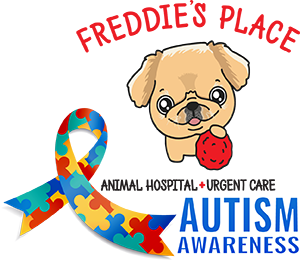 Pro’s and Con’s of Pets in the Workplace
Pro’s and Con’s of Pets in the Workplace
Work… yuck! At some point in our lives, we all have to buck up and buckle down at a J-O-B. However, somewhere between the post WWII employment boom & 2024, the nation underwent a vast change on how we all view employment and employers. As a society we’ve moved from an “I live to work” mentality, to a “I work to live” reality. In a recent global poll conducted by the folks at Gallup, 85% of people admitted they are unhappy at their jobs.. again, that is a GLOBAL number. It’s likely to be a higher percentage in this country, as we lead the world in being contrary and on the move. Think about that number… across the world only 15% of folks surveyed could say that they enjoyed their current jobs, or work in general. We’ve become a transient work force, in more than one way.
The pandemic changed the location of our workplaces, as a huge majority of employees made a home office their preferred work address. Employers made working at home easy, more controlled & measured, and were able to shutter “brick & mortar” buildings that were costly in rent and upkeep. The virtual office increased attendance, mainly because you just walk down your hall, grew employee satisfaction, cut costs to the worker by eliminating travel/restaurant/clothing expenses, and made working overtime more fashionable/easy.
The other major perk to working at home is that you never have to leave your pets. If you can keep your dog from voicing an opinion, and your cat from taking over your video conference call, then having your best fur buddies hang with you while you work is a huge plus to the average employee. With nearly 70% of American households including at least one fur friend as a part of the family, the added benefit of always having the emotional support, calming influence, and full time companionship of a pet in your workplace has become not only chic, but mandatory to some employees. As “Boomers” and Gen-X workers start to retire and phase out of the workplace, the millennial and Gen-Z employees have grabbed a larger share of the working class. Their voices are different, as are their needs.
As proof of that point, you might consider the many employers that are now offering a health package that includes pet insurance options as a way to entice the ever fickle and shrinking workforce to choose them over competitors. Other companies have looked into “bring your pet to work” days or hours, as well as “in house therapy pets” that come to the office every day. Cats, dogs, rabbits, goats, pigs and birds are all part of the pet workforce that is becoming less of an oddity, and more of a mainstream must have. Even businesses who, at one time, would never had considered having animals in their environment now cater to the pet friendly work with “Bring your Dog” days. Sporting venues, like some Major League Baseball stadiums, now have pet friendly days several times a year. You can “Take Rover to the Ball Game”, buy them “a Stadium Dog and a Water”, then teach him how to keep score! Pet friendly eateries and bars are now popping up in towns all over the country. Even specialty shops like “Cat Cafes” and “Doggy Diners” are becoming all the rage in major cities. You see dogs in carts at places like Home Depot, Walmart, Costco, and even in some grocery stores. Regardless if it offends you or not, chances are becoming greater that, one day soon, the guy in the connecting booth at Denny’s will be a dog. Pets have all the power, and our society loves it.
We’ve touched some some high level perks to having pets in the workplace, but lets get granular and talk about documented pro’s to having an animal helper workforce at job sites;
But it’s not all fur and fun, at least not for everyone. Pet’s in the workplace can also cause ill feeling, stress, concern, and extra work. The reality is, some people don’t like animals… so having an office full of furry friends makes their world a nightmare. There is the potential to offend or alienate someone because a breed or species is included or omitted from the office environment. If Bobby can’t bring his bearded dragon to the office but you get to play with a rabbit, Bobby might refuse to come to work or worse… take legal action.
Having this fantastic pet friendly workplace comes at a cost, a legal cost. Research and creation of the pet policy requires time and resources, as does monitoring and acting on violations. Legal teams spend countless hours reviewing and creating pet policies in these types of offices. They must consider where pets are allowed, where they aren’t, the creations of “pet free” zones or accommodations for those who aren’t “down with the hound” in the workplace. Some people don’t want a collie to roam into their cubical or join them in the restroom, and they must be given allowances and guarantees of equal treatment. There is additional insurance needed for bites, scratches, falls, trips, slips or other pet related injuries. The HR departments need people who understand the state rules and regulations surrounding accommodations and fair treatment. Both pet lovers, and pets loathers, must be considered and made to feel valued and heard. These issues often stop offices from enacting any pet friendly policies.
Even work at home staff need rules and policies surrounding animals. The call center industry has moved to an overwhelming majority of “work from home” staffing. However, having a dog barking loudly as they attempt to do their jobs, the explosion of noise that happens if someone knocks on door, the interruptions for feeding or potty breaks for the animals, all the time wasted as the employee fawn over and coddles their pet… these are all scenarios that require monitoring and rules to govern.
As you can see, having pets in the workplace shows incredible upside potential for a vast number of reasons. On the other hand, it also alienates a percentage of the workforce and creates a layer of policy and policing that costs time and money to the employer. So what is the right solution? We don’t believe there is one, it’s an individual choice for the employee and for employers.
One thing is for certain, as the world becomes more pet crazy, as we continue to incorporate animals into our lives as “family”, as the pet care industry continues to boom, and as people choose pets over human children more and more, you’re bound to see the increase of pet friendly access everywhere. So dress up your dog and put your cat in the carrier. It’s a work day… for everyone!
 That’s all for this weeks Dog Blog. We hope you found the information useful and easy to follow.
That’s all for this weeks Dog Blog. We hope you found the information useful and easy to follow.
For more Freddie’s Fun stuff, we urge everyone to stop by Freddie’s new Social Media Fun Place for laughs and information about pets. It’s all the Freddie’s Place normal funny business… just light on the business. You’ll find Freddie’s Fun Place at this link https://www.facebook.com/freddiesfunplace
We hope you’ll join us again next week for more words of wisdom from the Internets favorite Peke Reporter, as Freddie tackles another pet friendly topic. Until then, keep your pets safe and warm this winter season, spend time striving to being the person your pets thinks you are, and always be Pet Friendly… #FreddieSez!
Research Sources
Harvard Business Review: https://hbr.org/2023/11/research-the-benefits-of-a-pet-friendly-workplace
California DMV: https://www.dmv.ca.gov/portal/driver-education-and-safety/educational-materials/fast-facts/service-animals
Forbes: https://www.forbes.com/advisor/pet-insurance/pet-ownership-statistics





Leave A Comment